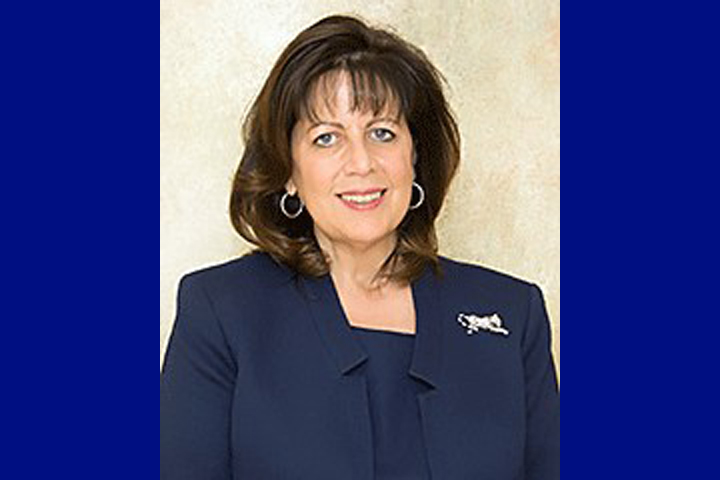BY DEAN MOSES
Schneps Media is sitting down with judges across the city’s court systems to discuss their roles and how they’ve changed in the age of COVID-19. This week’s interview is with the Honorable Deborah Kaplan, who handles civil matters as an Administrative Judge in Manhattan.
Schneps Media: Could you describe your duties as an Administrative Judge?
Hon. Deborah A. Kaplan: The New York County Supreme Court Civil Branch is housed in four buildings in lower Manhattan. It is one of the largest courts of original, unlimited civil jurisdiction in the United States. It takes ingenuity, innovation, organization, and team work to make our court operate effectively and efficiently. I am responsible for the performance, efficiency, and productivity of every part in this court.
I am constantly developing programs and strategies to address case delays, enhance case management and improve the administration of justice. I oversee this court’s budget, all employee issues, training for judges and court staff, judges’ vacation schedules and coverage for ex parte applications and mental hygiene hearings which are conducted each week. I also sit in both a Matrimonial Part and in our Judicial Mediation and Trial Assignment Part.
Pre-pandemic, I hosted many delegations from abroad who are interested in our court and how we do things here. In the last year or so, we hosted groups from Belgium; the Republic of Georgia; Slovenia; India; Saudi Arabia; Colombia; China; Israel. I address these groups along with other Court staff. We discuss our jurisprudence, answer lots of questions and try to convey all that we do to promote the true administration of justice.
SM: How has the position/proceedings changed during the pandemic?
DK: During the pandemic, running the court was even more of a challenge. Nothing is more important than ensuring meaningful access to justice for all court users. We had to make sure that essential applications were addressed expeditiously. We never stopped handling emergency applications. And, I was on the ground, in chambers, every day so I was able to address any issue that arose.
Shortly after most in-person operations paused in mid-March, our judges began to handle an expanding number of matters remotely, in addition to emergency applications.
SM: Is there a silver lining that you can find from the pandemic?
DK: This has been an exceedingly difficult time for our court. Many in our court family had friends and relatives who were affected by COVID-19 or were affected themselves. Others have had to deal with childcare issues and/or the care of older parents. Perhaps a silver lining can be found in the resilience shown by our court staff, as well as in the selflessness and dedication of our skeleton crew who continued to come to work so that there was never a day when we did not address applications that required immediate attention.
I believe that even when we increase in-person operations, there are proceedings that we can do remotely which will benefit litigants. For example, since some older adults may have difficulties coming to court, we could allow more cases involving older litigants to be addressed remotely, including applications for Orders of Protection (beyond those heard in Family Court) and guardianship hearings and conferences.
I think that the pandemic has encouraged lawyers and litigants to try and settle more matters and they have actively engaged in settlement conferences and have shown a willingness to engage in alternative or appropriate dispute resolution (ADR) options offered by this court.
SM: Are there any technical advancements that have been implemented since the pandemic?
DK: While this year marks the 20th year since e-filing began in New York State, and it continues to expand across the state, this court had not been entirely paperless. I think I can now say that we are, essentially, a paperless court – except for cases where a litigant represents him or herself. Unrepresented litigants are not required to participate in e-filing.
Our judges have learned to use Skype for business efficiently to conduct conferences, hearings, and other proceedings. We have also begun doing virtual bench trials.
SM: Are there any misconceptions people have about judges you would like to clear up?
DK: I think that people imagine judges ensconced in their chambers writing decisions and orders, or, on the bench presiding at hearings and trials and making rulings. We also spend a great deal of time trying to resolve cases long before trial. I know that settling a matter to the satisfaction of both parties is often far more in line with their needs and goals than a trial. Since, I don’t have the time to engage in extensive settlement conferences in every case (given my other responsibilities) I also identify other appropriate alternative dispute resolution options for the lawyers and litigants to consider pursuing in our court. I am committed to providing to court users innovative and varied alternatives to litigation.
SM: What are some of the most common problems you deal with at work?
DK: In addition to my role as Administrative Judge, I sit in several parts, including Judicial Mediation and a Matrimonial Part. Many litigants who appear in these parts have never been in court and just the idea of being in a courtroom is overwhelming and stress-inducing. I try to make litigants feel comfortable in my courtroom. When appropriate, I sit at the table across from the litigants and their lawyers and discuss the case with them. I speak quietly and calmly, and, more importantly, I listen. I also make certain that before I conference a case, I am well-prepared.





































